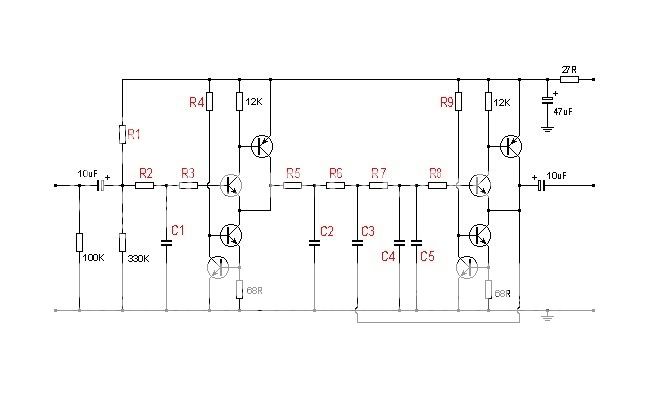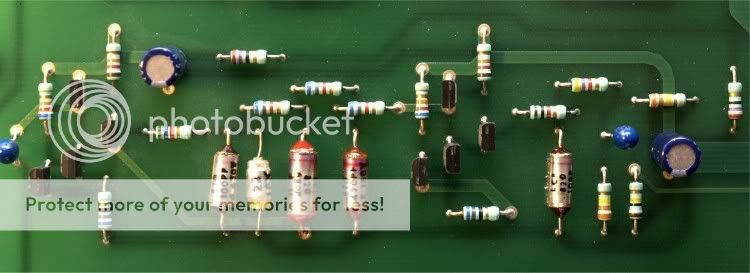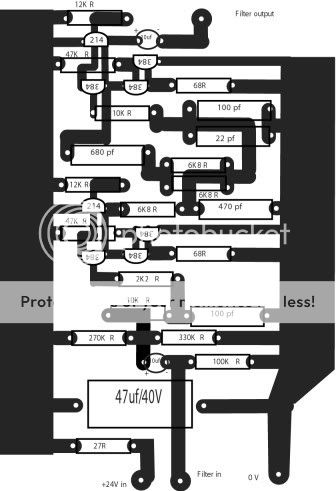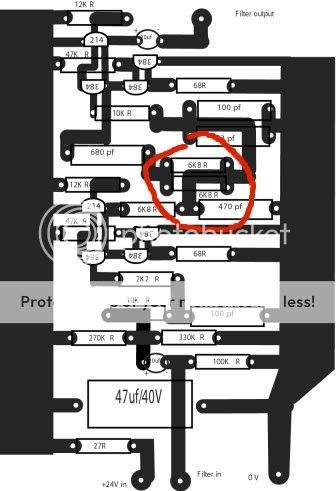Hello to all
I have been lurking here for some time (please excuse a longish post) and would like to thank
EVERYONE who takes the time to share their knowledge and expertise. You have certainly enlightened and helped me.

In 2000 I built a 102'ed DIY72 which replaced my DIY42 from 1996. I used a 6 channel 24V DC PSU to power both these pre-amps, with the PSU for the DIY72 being more advanced in that it used LM329CZ voltage references for the LM338K Steel regulators. This PSU definately sounded better than the standard LM338K Steel regulator implementation. Background over!
I had also noticed that there were differences in the component values in the buffer/filters stages between different pre-amp models but remained sceptical that there would be any appreciable difference to the sound between them. Late last year I decided to populate a second set of Filter boards for my pre-amp and used the values as shown in the NAC82 layout above. I put them in and with a smug smile of self righteousness, expected to hear no difference at all. The smile vanished from my face as my jaw hit the deck, the improvements were far from subtle.
Improved - low level detail, space, focus, imaging, depth perspective (suddenly spaces between cymbals appeared and one could hear where and how they were being struck), dynamics, timing and a much larger and deeper soundstage to name the most obvious improvements. I hate these hi-fi descriptions as they sound very exaggerated but hope they give some idea of the experience. In short, every aspect of performance is better by an order of magnitude, I am unable to go back to the original cards now.
To be fair, I used components from the same batch I bought and used to populate the original cards, to populate the new cards and recapped the old boards. The differences are not due to different or old components!
System context: Linn Sondek LP12/Ittok LVII/Adikt (until Klyde), Naim CDX, DIY72, DIY PSU, DIY135's and rebuilt Dahlquist DQ-10's.
All opinions are mine and results may vary depending on a myriad of factors. Thanks TonyL for a great forum.
Regards
Peter
P.S. From looking at NAC82 pictures the layout presented above seems to be a direct copy of the NAC82 component layout. (Can't check track layout!) Comments anyone?












